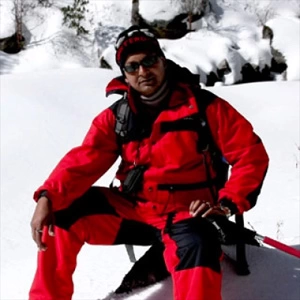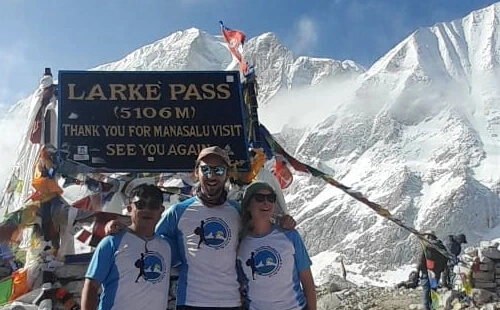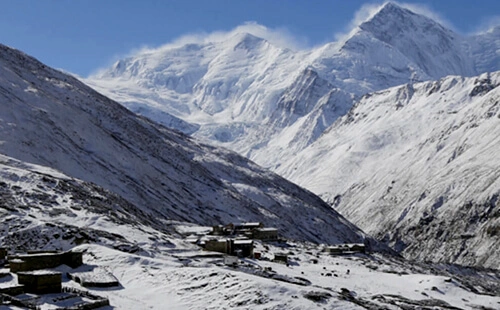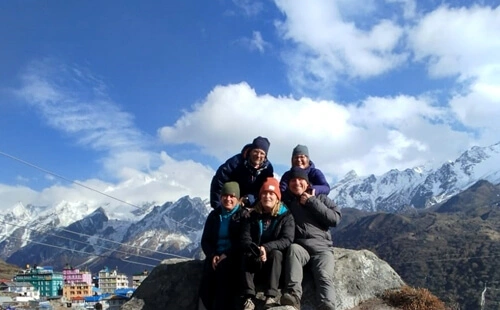Explore the list of best places to visit in Kathmandu Valley including a variety of outstanding destinations offering diverse cultural, and natural experiences.
Best Places to Visit in Kathmandu Valley
Table of Contents
From adventure seekers to culture and history enthusiasts, everyone will find their bliss amidst the best places to visit in Kathmandu. The capital city of Nepal, Kathmandu, presents you with a myriad of experiences to quench your thirst for adventurous exploration. Whether you want to scale through serene peaks or delve into the city’s ancient structures, it has something in store for every traveler.
Our exploration of some of the outstanding tourist attractions in Kathmandu will take us from the ancient marvel of several Durbar Squares and stupas to the serenity of Nagarkot. The Durbar Squares in the valley are one of the significant historical landmarks, revealing the glory of Nepal’s royal past. On the other hand, the ancient stupas and temples symbolize religious diversity and the mystical aspects of Nepal. As we venture through these eight best Kathmandu Valley attractions, prepare to witness the wonders of Nepal, including its rich history, culture, and breathtaking natural beauty.
Unveiling the Best Places to Visit in Kathmandu
The treasure trove of Nepal, Kathmandu Valley, is recognized for its immersive blend of cultural heritages, architectural marvels, and serene nature. The fact that the valley possesses a total of seven UNESCO World Heritage Sites reflects the immense historical and cultural significance of the capital city. With such diversity, the city has a lot to offer to explorers seeking riveting experiences. In that account, some of the best day trips from Kathmandu are listed below.
1. Kathmandu Durbar Square
This is one of the valuable historic sites in Kathmandu among others in Bhaktapur, and Patan, which served as the courtyard for the royal palace in the past. The Durbar Squares were used for the coronation of the Kings of the valley and various royal celebrations. Therefore, Kathmandu Durbar Square carries a significant historical legacy tied to its royal past, making it a captivating destination for visitors to explore the royal heritage of Nepal.
Facts and highlights of Kathmandu Durbar Square:
- The landmark served as the royal palace of the Malla and Shah dynasties and was the center of political and cultural activities for centuries.
- It was listed as a UNESCO World Heritage Site in 1979 for its extraordinary cultural and historical importance.
- It served as the coronation venue for the Kings.
- The architecture of the Durbar Square incorporates a unique blend of Newari, Mughal, and European styles as featured in carved wooden windows, stone sculptures, and pagoda-style temples.
- The Kumari Ghar, located within the square is the residence of Kumari, the Living Goddess. You might be able to get a glimpse of Kumari during her scheduled appearance.
- It is a hub for celebrations and festivals, including some significant events such as Indra Jatra, Dashain, and Kumari Jatra.
- Because of the destructive 2015 earthquake in Nepal, the durbar square faced significant damages and is currently under restoration process.
- The Durbar Square is open to visitors generally from 10:30 AM to 4: PM. The charge for entrance for SAARC country nationals is $1, and for other nationals, the cost is $10. However, the opening hours and fees may vary sometimes.
2. Pashupatinath Temple
Located on the banks of the Bagmati River, Pashupatinath Temple is one of the significant religious sites in Kathmandu. The temple is a worship place of Lord Shiva and is of immense importance in Hinduism. Thousands of devotees from all over Nepal, India, and other countries visit the temple during the auspicious occasion of Shivaratri also known as the night of Lord Shiva. Besides, the temple is jam-packed with devotees during different other religious festivals throughout the year. The temple’s religious and spiritual aspects and the unique architecture make up for an ambient atmosphere, alluring several visitors on a daily basis.
Facts and highlights of Pashupatinath temple:
- It is a revered Hindu temple dedicated to Lord Shiva who is worshiped as the deity of destruction and creation as per Hindu mythology.
- It was listed in UNESCO World Heritage Site in 1979.
- The temple’s origin dates back to the 5th century, but the current structure traces back to the 15th century.
- The main body of the temple holds a sacred lingam, which is a symbol of Lord Shiva.
- The bulls roaming in the temple are considered sacred and symbolize Nandi, the vehicle of Lord Shiva.
- The temple is a place for various vibrant religious rituals, prayers, and ceremonies. You can also witness the performance of final rites for departed souls at the bank of the Bagmati river.
- Maha Shivaratri is one of the biggest festivals celebrated in the temple. The temple witnesses the largest crowd during this holy occasion when devotees, mainly from Nepal and India, visit the temple to receive the blessings of Lord Shiva.
- The temple structure reflects authentic Nepali pago-style architecture, including the display of delicate wooden carvings and gilded roofs.
- You soak in the spiritual ambiance of the area and witness the cremation ghats while sitting at the viewpoint on the other side of the river bank.
3. Swayambhunath Stupa
Situated on the northwest hilltop of Kathmandu Valley, the stupa is one of the best places to visit in Kathmandu for a peaceful ambiance. It is of great religious and spiritual significance for Buddhists. The landmark is famously known as the Monkey Temple because of the large population of monkeys in the area, roaming around in the streets and the stupa. The topmost point of the stupa overlooks the bustling city area and the surrounding hills which is one of its major attractions.
Facts and highlights of Swayambhunath Stupa:
- It is a sacred pilgrimage site for both Buddhists and Hindus and is believed to be a vital center of enlightenment and spirituality.
- It is a UNESCO World Heritage Site and is one of the oldest stupas of Nepal which is considered to be over 2,000 years old.
- The stupa is also referred to as the Monkey Temple because of the large number of monkeys in that area, which you are bound to witness on your visit there.
- The stupa offers a captivating panoramic view of the valley from the hilltop.
- The stupa is decorated with a majestic pair of painted eyes on all four sides of the main stupa structure. The large eyes painting, also known as the Eyes of Buddha symbolizes the all-encompassing wisdom and compassion of Buddha.
- The devotees offer their devotion by spinning the prayer wheels surrounding the stupa while chanting sacred mantras.
- Visitors can also participate in the ritualistic circumambulation by walking clockwise around the stupa.
Do you want to extend your cultural tour experiences and traverse through some of the stunning short treks in Nepal? Check out the best short treks in Nepal and plan your next trip with us.
4. Boudhanath Stupa
Residing in the bustling crowd of Kathmandu, Boudhanath Stupa is another significant religious and spiritual center for Buddhists. Unlike Swayambhunath, Boudhanath Stupa is located right in the middle of a busy city area and the ambiance is quite different comparatively. Despite being in the heart of a bustling city, the ambient space around the stupa exudes a unique blend of calm and chaos. One of the special features of the stupa is its massive mandala, making it one of the largest spherical stupas in Nepal and the world. Boudhanath Stupa, one of the top tourist spots around Kathmandu, sits on the ancient trading route from Tibet and used to be a hub for various cultural and religious transactions.
Facts and highlights of Boudhanath Stupa:
- It is one of the holiest Buddhist sites in Nepal and is a significant pilgrimage destination for Buddhists worldwide.
- In 1979, the stupa was designated as a UNESCO World Heritage Site for its cultural and religious importance and is one of the tourist attractions in Kathmandu.
- You can witness a vibrant Tibetan influence in the area as it used to serve as a significant trading route from Tibet.
- The stupa is adorned with beautiful prayer flags which flap majestically on windy days.
- Devotees and visitors engage in offering their tribute by spinning the prayer wheels around the stupa.
- The huge eyes painted on all four sides of the stupa symbolizes the compassionate Eyes of Buddha.
- The surrounding area around the stupa is filled with monasteries and gompas, Tibetan Buddhist Temples, where monks reside.
- Some of the festivals joyously celebrated in the stupa are Losar, Buddha Jayanti, Monlam Chenmo, Chotrul Dunchen, and so on.
- The entry fee for SAARC nationals is around $0.7 while it costs around $3 for foreigners. However, the entry fees and timing may vary depending on the situation.
5. Bhaktapur Durbar Square
Located 13 km (8 miles) away from Kathmandu city, Bhaktapur Durbar Square is one of the best places to visit near Kathmandu. The ancient royal palace is among the major attractions of the city. This historically significant palace complex is divided into four areas, Durbar area, Taumadhi area, Dattatreya area, and Pottery area. Its origin dates back to the 14th century when it housed the Malla Kings for two centuries and later served the kings of the Kingdom of Bhaktapur. And, the royal past still echoes through the magnificent palace’s well-preserved ancient architecture, craftsmanship, and timeless presence.
Facts and highlights of Bhaktapur Durbar Square:
- It is a UNESCO World Heritage Site recognized for its marvelous architecture and historical importance.
- It served the Malla Kings in the 14th and 15th centuries and later housed the Kings of Bhaktapur from the 15th to late 18th century.
- The palace showcases stunning Newari architecture featured in wooden carvings and various well-preserved medieval structures.
- The 55 Window Palace, a.k.a. The Pachpanna Jhyale Durbar, situated inside the square is an architectural masterpiece that displays delicate wooden carvings.
- The durbar square also has a towering pagoda-style temple, Nyatpola Temple, meaning a five-storied temple. It is one of the tallest and most intricately designed temples in Nepal.
- It is home to Bhairavnath Temple, dedicated to the deity Bhairava, and it showcases artistic stone carvings and stunning architectural details.
- As Bhaktapur is recognized as the city of pottery and handicraft, the premises around the durbar square are facilitated by artistic pottery-making or wood-carving workshops.
- The tranquil atmosphere of the square lights up with vibrance during festival celebrations, including Bisket Jatra and Dashain.
- The entry fee for SAARC nationals is around $4 while for other nationals the cost is $15.
6. Patan Durbar Square
Another one of the must-visit historical sites around Kathmandu Valley is Patan Durbar Square. Built centuries ago, the square has been home to several reigning Kings of Nepal in the past, including the Malla Kings. The unique blend of the red bricks-bedded floor and the delicate craftsmanship displayed in every corner of the landmark resembles the heritage of Lalitpur. The structure offers a mesmerizing glimpse into the regal past and the artistic heritage of the Newari community.
Facts and highlights of Patan Durbar Square:
- It served as home to several Malla Kings of Lalitpur and remained the center of power and governance for centuries.
- As one of the major three durbar squares in Kathmandu Valley, the square was listed as UNESCO World Heritage Site in 1979.
- One of the major specialties of the palace is the Newari architecture which can be witnessed through wooden carvings, temples, and stone sculptures.
- Krishna Mandir, towering at the center of the square, is a masterpiece of stone architecture built in the 17th century by King Siddhi Narsing Malla.
- The square features the main courtyard, also known as Mul Chowk, which is a gathering place for visitors.
- You can visit the Patan Museum, a part of the square, which exhibits a large collection of ancient art and artifacts.
- It is a hub for festival celebrations, including Rato Machhindranath Jatra and Bisket Jatra.
- The entry fee for the durbar square including the museum is around $2 for SAARC nationals and $8 for other nationals.
7. Kirtipur Durbar Square
This is one of the hidden gems of Kathmandu Valley located in Kirtipur, around 5 km (3 miles) southwest of the capital city. Kirtipur is a historical city in the valley and holds a significant place in history recognized as the Battle of Kirtipur. It played a crucial role during the Gorkha conquest of Nepal in 1767. The battle between the Newars of the valley and the Gorkhalis launched by Gorkhali king Prithvi Narayan Shah was a turning point in the unification of Nepal. Located in such a historical landmark, the square also holds significance as home to several Kings in the past.
Facts and highlights of Kirtipur Durbar Square:
- The durbar square’s historical importance also derives from the fact that it is located in Kirtipur, which was once the capital of the valley before the establishment of Kathmandu.
- The square is a perfect embodiment of Newari heritage Kirtipur is known for its well-preserved Newari culture and traditions.
- There is a sacred Buddhist site, Chilancho Stupa, within the boundaries of the square with its origin tracing back to the 16th century.
- You can find plenty of traditional Newari architecture as displayed through the architectural style of the structure.
- Because of Kirtipur’s history of battle and fortifications, the square and surrounding area faced structural damage.
- The traditional festivals, including Sindoor Jatra, are celebrated in the square by chariot pulling and the smearing of vermillion powder.
8. Nagarkot
Last but not least, Nagarkot is one of the must-see destinations near Kathmandu Valley. It is a scenic hill station situated in Bhaktapur about 32 km (19 miles) east of Kathmandu. Nestled above the altitude of 2,000 m (1.2 miles), it offers a breathtaking panoramic view of surrounding mountain ranges and lush green hills. Famous for the glimpses of sunrise and sunset, the Nagarkot tour will rejuvenate you with nature. The tranquil ambiance of the dense forest makes for an amazing hiking trail. For nature lovers and adventure seekers, this could be one of the best places to visit in Kathmandu.
Facts and highlights of Nagarkot:
- The picturesque hilltop of Nagarkot offers a panoramic view of Kathmandu Valley and the surrounding mountain ranges, including the Everest range, Jugal Himal range, Games Himal range, and Langtang range.
- Nagarkot is most famous for the mesmerizing sights of sunrise and sunset, as the golden hues of the sun light up the snow peaks on clear days.
- It is a peaceful escape from the busy city life, recharging you with the ambient natural atmosphere.
- Nagarkot offers a range of outdoor activities, including hiking, cycling, and paragliding.
- The Nagarkot Tower presents you with a gorgeous mountain view and is a great picnic spot.
- You will have the opportunity to explore the local culture and lifestyle and amazing local cuisines, including Sel Roti, Gorkhali Lamb, Kwati, and so on.
Frequently Asked Questions
1. Do visiting these places require any entrance fees or permits?
Visiting some of the above-listed tourist attractions in Kathmandu Valley requires entry fees. The entry permit fees for foreigners range from $1.5 to $12, while SAARC nationals are charged fees ranging from $0.39 to $8. The specific amount depends on the destination you plan to visit.
It’s important to note that the entry fees could vary sometimes. However, as your travel operator will manage your travel permits and costs throughout the trip, you need not worry about any of these requirements. You can simply enjoy your trip hassle-free.
2. What is the best time of the year to visit these attractions?
The best time of the year to visit these tourist attractions in Kathmandu Valley is during the spring (March to May) and autumn (September to November), when the atmosphere is pleasant with mild temperatures and clear skies.
3. Are there any guided tours available for these destinations?
Yes, guided tours are available for all of the above-mentioned destinations. You will be assisted throughout your tour by our well-experienced expert guides with over a decade of experience.
4. Can I visit these places in a single trip?
No, it is not possible to visit all of these places in one day. It will require you at least 2 days to cover all these destinations with the help of a guide. Although all of these destinations are within the valley, just one day for this trip is not advisable. Make sure to have sufficient time to visit each one of these incredible destinations to enrich your travel experience.
The above-mentioned list of the best places to visit in Kathmandu will take you through a wide range of intriguing travel experiences in the valley. If you want to enrich your travel experience by exploring the Kathmandu Valley, contact us right away! Adventure Himalayan Travels is a trusted local travel agency with decades of expertise in organizing unforgettable trips within and beyond borders.
Our team of expert tour guides with over a decade of experience and dedicated staff members will ensure you have a memorable trip. You can conveniently contact our team for personalized assistance. Additionally, make sure to explore our extensive range of Tours in Nepal, allowing you to discover even more of the incredible offerings this country has in store for you.




